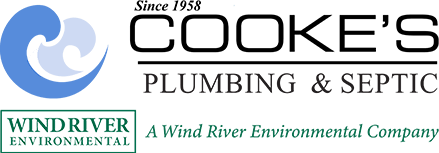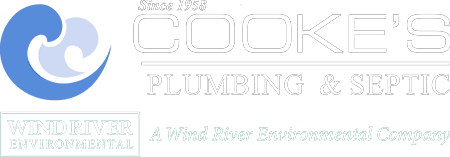We Are All Part of the Problem…and the Solution!
Living in Martin, St. Lucie, and Indian River Counties means a lot of rain, and sometimes with all of that rain comes flooding. It seems that the rainy season is all year around the Treasure Coast lately.
This heavy rain can help contaminate the well of a septic tank and this can cause a serious public health threat. It is documented that there are more than 18,000 septic systems in Martin County alone!
At Cooke’s Plumbing and Septic, we have been learning more and more that nutrient runoff from septic tanks is one of the contributors to the recent algae bloom problems we have been having in Florida.
If a septic system becomes overloaded with floodwaters, the excess wastewater has to go somewhere. If this wastewater makes its way into the well, the canals and lake water can become contaminated. If you have a well, that also can become contaminated (e.g. E. coli). Septic systems are the next largest contributor of nitrogen.
What Causes Algae Blooms?
FAU did a recent study that found that the runoff from farms is not the only contributor to the high levels of nitrogen in our estuaries, canals, and coastal waters in Martin County. When you pair that with the runoffs from Lake Okeechobee, we get a toxic mess that becomes a public health concern and will kill a lot of the marine life that some Treasure Coast people depend on as a food source. Too much nitrogen in our Stuart, Fort Pierce, and Port St. Lucie area canals, lakes, and coastal areas can decrease oxygen significantly and increase algae which can suffocate the ecosystem.
Nitrogen from human wastewater is normal, but it is a major contributor to this problem and we can be proactive about how we care for our land and waterways. Cleaning chemicals do not only kill germs, they destroy the beneficial bacteria that break down the waste water. Then when the rain floods the area, the sewage runoff rises out of your septic system and into the ground and gets washed away into the drains that fill our public waterways.
It’s All About Septic Maintenance and Prevention
Be aware, especially if you live in or near Stuart, Port St. Lucie, Fort Pierce, or Jensen Beach that these areas of Martin County have the highest concentration of septic tanks per capita which can heavily impact the local environment.
How Can You Help Stop Algae Blooms?
Start by insulating any exposed piping. You should do regular visual inspections of the well’s surface features to catch small problems before they become big ones. It is always a good idea to have the septic tank pumped every couple of years in a normal area, but when close to waterways, every year can make a huge difference if there is an overflow. This can reduce nitrogen levels by 10%
Regular maintenance of your septic system is the best preventative. Mark it on your calendar to do it around the same time every 1- 3 years. Or ask your septic specialist if they can send you a reminder for service via mail, text, or email. Technology today allows us to remain in communication in many forms, so choose whatever method is best for you.
Be mindful about what you flush down your toilets and what you wash down the drains and how many gallons of water you are using in a day. Low-flow water fixtures can help you conserve water. Also, an easy adjustment is to think about alternatives like vinegar for cleaning and surfactant-based soaps for laundry and dishes to keep your septic system healthy.
Are You Ready to Make a Shift?
Septic tank additives with bacterial starters thrive under the natural growth conditions of a septic tank. They will quickly restore the conditions necessary for a properly functioning wastewater treatment system!
We Can Be Part of the Solution to Ending Treasure Coast Algae Blooms
- Reduce sludge build-up in your septic system by having it pumped regularly (Especially if you live near drainage or public waterway)
- Reduce wastewater inputs to the septic system by installing low-flow water fixtures in your home and conserving water (unless flushing household products down the drain)
- Avoiding pouring large amounts of household products and other chemicals down your drain at the same time. When disposal down the drain is necessary, always flush with plenty of water and do not mix products together (toxic gases might be formed)
- Do not use solvent-based septic tank additives or other products to enhance the normal function of your septic tank
- Always read the label carefully for all household products. Note the active ingredient(s) and follow the manufacturer’s guidelines for proper use, storage, and disposal.
Algae blooms have been causing damage to the environment and headaches for us all, but if we work together to take steps to treat the problem, then we will soon begin to see reductions in this unwanted guest.


